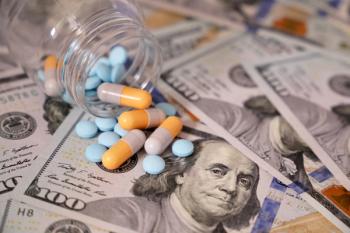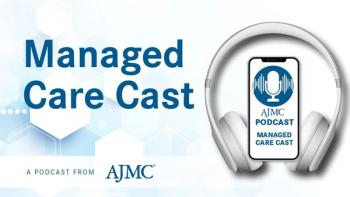
Sotorasib Cost-Effective in US, Not in China for NSCLC
Investigators compared cost-effectiveness of the KRAS inhibitor sotorasib against the taxane docetaxel in the second line for non–small cell lung cancer (NSCLC).
Mixed results were seen following a cost-effectiveness analysis that compared sotorasib against docetaxel for use as second-line treatment in patients diagnosed with
Investigators published their findings in a recent issue of
“Sotorasib is costly and can increase the financial burden on patients,” the study authors wrote. “However, there is no economic evaluation of sotorasib for the treatment of KRAS G12C–mutated NSCLC.”
For their analysis, they used patient data from the ongoing phase 3, multicenter, randomized, open label, active-controlled CodeBreak200 clinical trial (
For China, the investigators’ results show that sotorasib was associated with an increase of 0.35 QALYs and a total cost of $84,372.59. This equates to an increase 0.09 more QALYs compared with docetaxel. The ICER was $102,701.84, which they noted exceeded 3 times the country’s GDP, “so sotorasib had no economic advantage.”
In contrast for the US, sotorasib led to 0.35 more QALYs compared with docetaxel, at an ICER of $15,976.50/QALY, and a total between 1 and 3 times the GDP, “indicating that the increased cost of sotorasib was acceptable,” the authors wrote. When the willingness-to-pay (WTP) value came in below $15,650, the probability that docetaxel was considered cost-effective was higher, and when it the WTP value came in above $15,650, sotorasib was shown to have economic benefit.
Top influential factors on the ICERs were discount rate, follow-up cost, and utility value of progression-free survival. Additional single-factor sensitivity analyses noted these top 3 factors as having the most influence on the ICER: discount rate, hospitalization cost, and cost of treating diarrhea with docetaxel.
In particular, a drop in total cost of a follow-up exam was more likely to lead to sotorasib having an economic benefit, while an increase in the value of the WTP threshold for docetaxel led to a gradual decrease in docetaxel’s economic advantage. For China, the WTP threshold had to exceed $102,500 before a cost-effective benefit was seen for sotorasib vs docetaxel, at which point the probability of this outcome jumped from 0% to 49%.
Sotorasib is approved for use in the US, European Union, Norway, Iceland, and Liechtenstein, and the UK,3 but not in China—where it has only been investigated in clinical trials—which led the authors to investigate its cost-effectiveness there.
References
1. Zhu YN, Tang M, Sun KX, Gao B, Shi XP, Zhang P. Cost-effectiveness of sotorasib as a second-line treatment for non–small cell lung cancer with KRAS G12C mutation in China and the United States. Front Pharmacol. 2024;15:1348688. doi:10.3389/fphar.2024.1348688
2. Study to compare AMG 510 "proposed INN sotorasib" with docetaxel in non small cell lung cancer (NSCLC) (CodeBreak 200). ClinicalTrials.gov. Updated March 28, 2024. Accessed July 3, 2024.
3. European Commission approved Lumykras (sotorasib) for patients with KRASG12C-mutated advanced non–small cell lung cancer. News release. January 9, 2022. Accessed July 3, 2024.
Newsletter
Stay ahead of policy, cost, and value—subscribe to AJMC for expert insights at the intersection of clinical care and health economics.














































